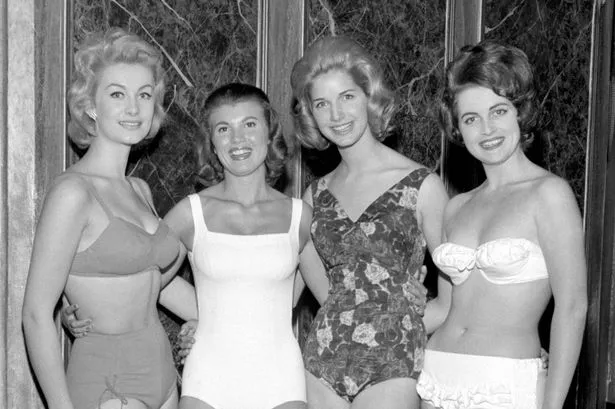The bikini has been making waves as a summer essential since it was created in the 1940s. As we dust off our swimwear once again, here’s a look back at the evolution of the iconic two-piece
The iconic bikini, a staple of summer fashion since the 1940s, is nearly 80 years old and still turning heads. Diana Vreeland, the legendary fashion editor at Harpers Bazaar and Vogue, once famously remarked that the bikini was “the most important thing since the discovery of the atomic bomb.”
Indeed, Vreeland’s observation holds true as the two-piece continues to captivate with its enduring allure and provocative charm. This tiny garment has made an unprecedented impact on fashion history.
Tracing back to the mid-19th century, swimsuits have adorned the figures of those frequenting the beaches of Normandy and Biarritz. However, it was in the summer of 1946 that swimwear experienced a revolutionary change.
READ MORE: Rihanna’s most glam pregnancy reveals from Met Gala strut to Superbowl shock
Inspired by the first American nuclear test at Bikini Atoll, French engineer and textile manufacturer Louis Réard unleashed a sartorial sensation upon post-war France: the bikini.
Réard, while soaking up the sun in Saint-Tropez, noticed women rolling down their swimsuits for a fuller tan, which led him to design a swimsuit that left the midriff entirely exposed.
The so-called “world’s smallest swimsuit” made from mere scraps of fabric and adorned with Bernardini’s fan mail excerpts, scandalously revealed her navel – a body part deemed too intimate for the public eye at the time.
Brigitte Bardot became an early advocate when she famously donned a simple floral bikini on Cannes’ beaches in 1953. At just 18, Bardot’s bold choice helped cement the bikini as an emblem of youthful rebellion and the burgeoning consumer culture of her era.
By the 1960s, bikinis continued to ride a wave of popularity, even as some European beaches still banned them.
Hollywood played a pivotal role in the bikini’s enduring appeal. The James Bond flick Dr. No featured Ursula Andress emerging from the ocean in a now-iconic white belted bikini, a scene that caused quite the splash.
Channel 4 hailed this moment as the ultimate bikini scene in cinematic history, and in 2001, the bikini fetched £46,070 ($61,500) at auction, with film writer Martin Rubin calling it a “defining moment in the Sixties liberalisation of screen eroticism”.
In the same year, actress Sue Lyon was seen lounging on the grass in a floral bikini in Lolita, while Raquel Welch donned a fur two-piece in One Million Years B.C. (1966). These iconic film scenes played a significant role in popularising the bikini worldwide.
However, it wasn’t until 1968 that the bikini really took off in France, as social rebellion and the rise of feminism began to redefine women’s fashion and its symbolism.
1980s
By the 1980s, bikinis accounted for 20% of swimsuit sales in the US, outperforming all other swimwear styles. However, with growing awareness of skin cancer, the popularity of the skimpy bikini plummeted. Suddenly, high-rise one-pieces were all the rage.
Alongside one-pieces, variations of the bikini like the ‘tankini’ and ‘camikini’, featuring long tops that covered the midriff and ended at the hip bones, gained popularity.
Swimwear icons such as Baywatch’s Pamela Anderson and Sports Illustrated model Cindy Crawford were often seen in plunging one-pieces and high-waisted bottoms.
1990s
As the Eighties athleisure trend began to favour simpler aesthetics, the bikini made a triumphant return. Luxury brands started transforming the two-piece swimsuit into high-glamour fashion statements.
In 1996, Chanel downsized the bikini and adorned it with its iconic logo, showcasing it on the runway modelled by supermodel Stella Tennant.
The following year, Tom Ford at Gucci pushed the boundaries further with an almost invisible ombré thong bikini embellished with a bold metal G – designed for all genders and intended to be noticed.
2000s – 2010s
Today, the bikini continues to be a contentious item of clothing, often finding itself under censorship. In 2013, an advert featuring Pamela Anderson dancing in a bikini was banned by the British Advertising Standards Authority for degrading women.
That same year, Cambridge University prohibited the Wyverns Club of Magdalene College from organising its annual bikini jelly wrestling contest. However, as designers become more inclusive and innovative with their designs, it appears that the bikini has entered its golden age.
Source: Mirror







Leave a Reply